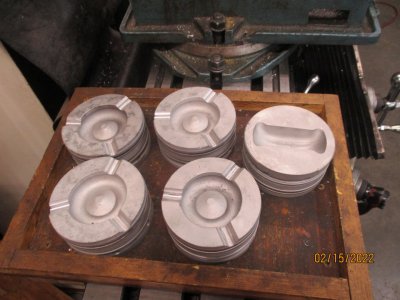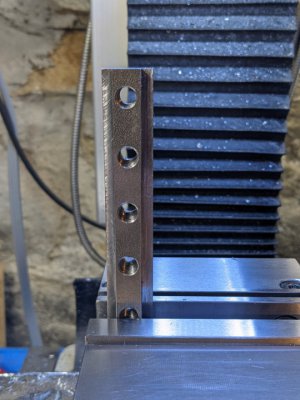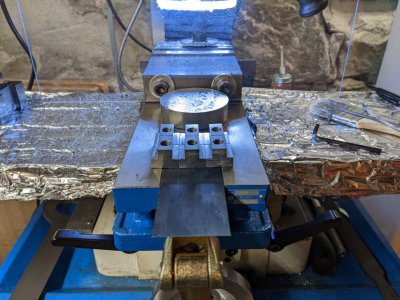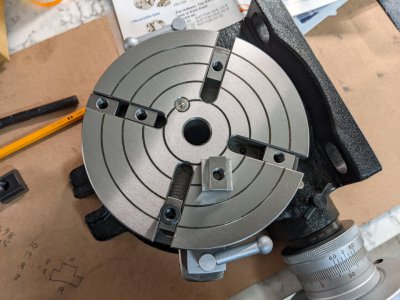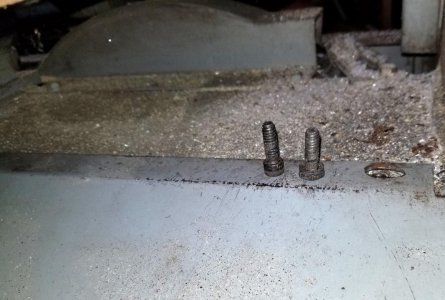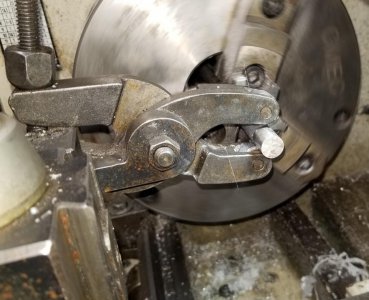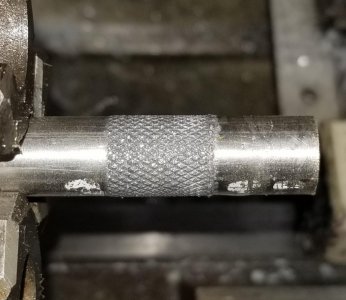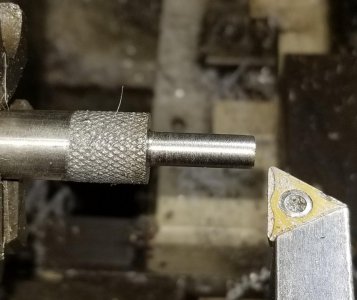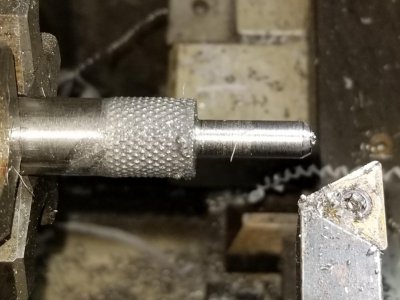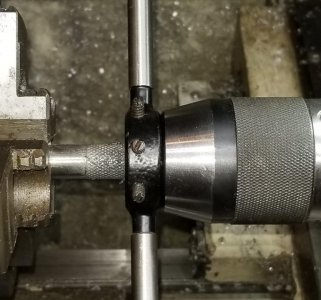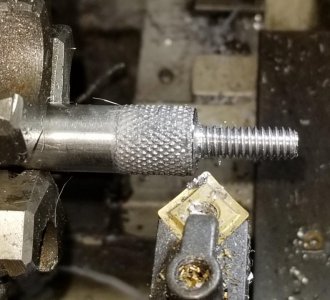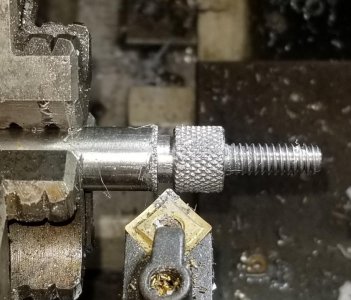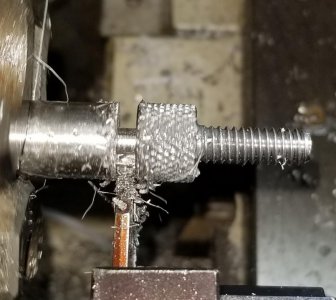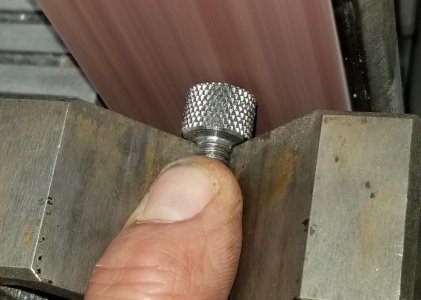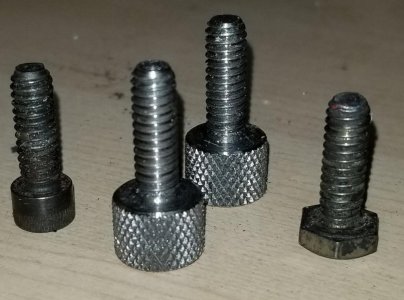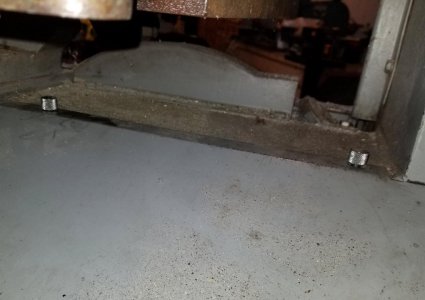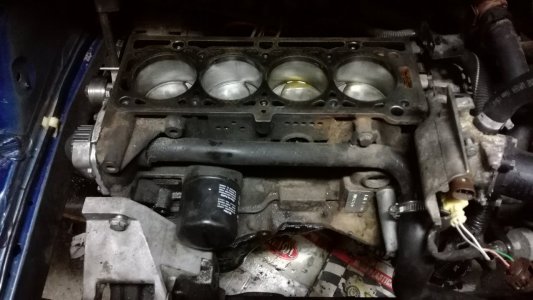POTD was bolting a power feed cable/chain setup to my circa 1948 DoAll 16” bandsaw. Most DoAll’s don’t have the power feed on them for some reason. Might be it was an accessory and not included with the saw? Regardless, really “tough” job to run three 3/8” bolts through the mounting bracket into the back of the table and attach the bottom cable pulley to the actuator arm.
My DoAll 16" ML bandsaw
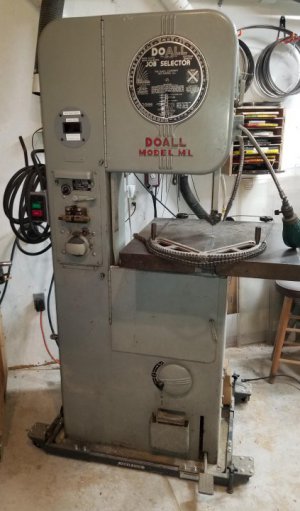
Power feed installed. Pedal down position here. Releasing the pedal drops the feed weight and the actuator arm. Cable is pulled down taking the work holder with it.
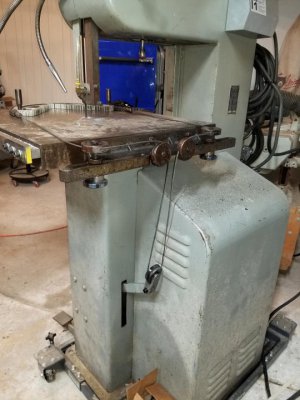
So why does this 3-bolt project warrant a post in the POTD string? I thought others may be interested in the “quaintness” of the power feed design. Quick version is it’s nothing fancy. The feed is powered by gravity via a weight inside the saw. Step down on the pedal at the base of the saw to lift the weight, position your work in the work holder, release the pedal and the cable/chain pull the work into the blade. The pressure can be varied by moving the weight along a pivot arm. This is done with the speed adjustment handle on the front of the saw. According to the manual, pressure varies between 25 – 80 lbs. You can also feather the weight with your foot on the pedal.
Step down on the power feed pedal to lift the weight. Move the pedal sideways to catch lock it in the "ready to go" position. Pressure is varied by the feed crank, 50 turns to go from 25 lbs. to 80 lbs.
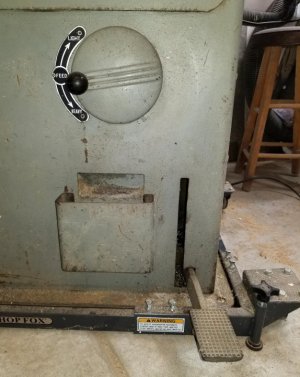
Actuating arm on the back of the saw in the "ready to go" and "deployed" positions. A length of braided cable goes through the pulley and up to pulleys on the mounting bracket.
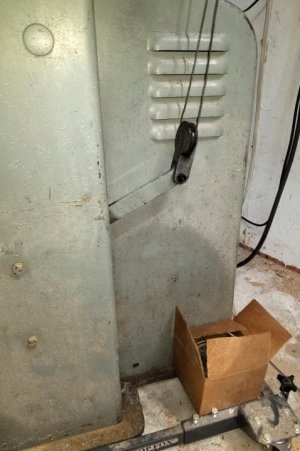
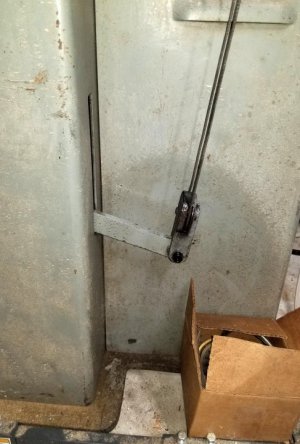
The actuator arm out of the back of the saw has a pulley with a cable. The cable runs up to a mounting bracket with a pair of fixed pulleys. There are two removable pulleys that mount to the mounting bracket, these are just above the table top. The cable runs through the removable pulleys and terminate with either a hook or roller chain.
Feed pressure crank on the front of the saw moves the feed weight along a parallel feed arm.
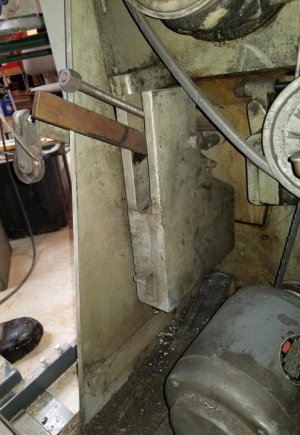
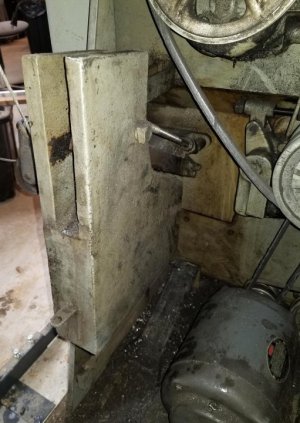
I set up for a cut by leaving the pedal in the up position (end of travel), set the work holder up to the blade, wrap the chain around the work holder, double back the chain to expose a link pin, and engage the hook cable end. Usually go a link tighter than needed to ensure the cut is completed.
Pedal released or "end of power feed" position. The cable on the left transitions to roller chain, one on the right end with a hook that links into the chain to set the loop length.
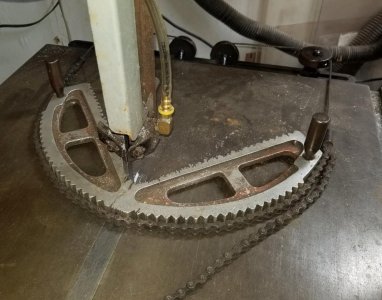
Ready for a cut! Release the pedal and guide the cut with the work holder.
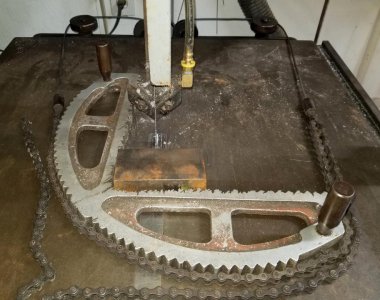
In normal use, the two removable pulleys are left off the mounting bracket as they set just above the table top. Naturally you can still push material into the blade with hand pressure, but the feed relieves you from having to apply pressure.
Thanks for looking, Bruce


